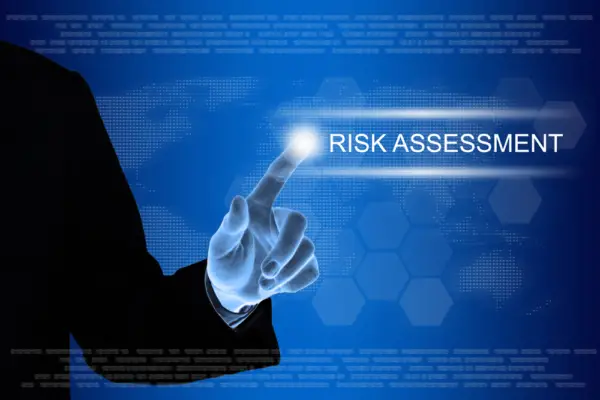Effective financial management is crucial for any organization’s sustainability and growth. One essential component of this is audit risk assessment, a process that identifies, evaluates, and manages potential risks that may impact the accuracy and reliability of an organization’s financial reporting.
The process is often complex, necessitating a comprehensive understanding of internal auditing, various audit stages, and the execution of internal control activities.
The following article presents a detailed guide to audit risk assessment, elucidating the challenges auditors often face, the purpose and process of internal audits, and the significance of understanding, documenting, and testing internal control.
This guide aims to provide valuable insights into enhancing the efficacy of financial management through rigorous audit risk assessment.

Audit Risk Assessment: The Why and the How
Understanding the rationale and methodology behind audit risk assessment is imperative for effective financial management, as this process aids in identifying potential risks that could significantly impact an organization’s financial stability.
The risk assessment process involves a comprehensive review of an organization’s financial statements to identify risks of material misstatements that could negatively affect the credibility of the financial statement audit.
Under the oversight of the board of directors, the audit team evaluates internal controls, implements audit procedures, and gathers audit evidence to assess these risks.
The results of this assessment guide the audit procedures and the subsequent audit opinion. Thus, a robust audit risk assessment contributes greatly to the reliability of financial statements and the overall financial management of an organization.
Risk assessment challenges for Auditors
Navigating the complexities of evaluating potential threats and vulnerabilities can pose significant challenges for auditors. These challenges revolve around three main areas:
- Understanding and applying risk assessment procedures: Auditors need to comprehend the internal control framework, identify inherent risks, and assess control risks accurately. This process requires thorough tests of controls to detect potential misstatements, which can consume substantial audit effort.
- Evaluating the internal audit function: Auditors struggle to ascertain the effectiveness of the internal audit team, their design of controls, and their ability to detect and prevent misstatements.
- Dealing with the override of controls: Despite a strong control environment, the risk of management override remains a significant concern, making risk assessment a daunting task.
What is Internal Audit?
Internal audit refers to an objective assurance and consulting activity designed to add value and improve an organization’s operations. It provides a systematic approach to evaluate and improve the effectiveness of risk management, control, and governance processes.
It involves assessing internal control systems and testing controls to enhance audit efficiencies. The aim is to ensure robust entity-level controls and the control environment, leading to effective monitoring activities.
An internal audit also evaluates compliance with laws, identifying discrepancies and recommending corrective actions. It examines financial reporting frameworks to ensure accuracy and reliability.
Internal audits play a crucial role in managing an organization’s finances. They help identify potential risks and implement necessary controls to reduce them, contributing to the overall financial management of the organization.
Audit stages and checklist
Delving into the evaluation and examination process, it is crucial to consider the various stages involved and the checklist that ensures a thorough and complete review.
Audit planning is the first stage, setting the groundwork for subsequent audit planning activities. At this juncture, engagement responsibilities are clarified, resource requirements identified, and potential assessment of fraud risks initiated.
Internal control assessments are key to evaluating the effectiveness of controls, thereby pinpointing areas prone to inaccurate disclosures or inconsistent financial statement assertions.
The process then transitions into the execution stage, where assessment results become actionable insights.
Audit follow-up, the final stage, involves a review of the effectiveness of the implemented changes.
The audit stages and checklist anchor robust financial management, facilitating the identification of loopholes and ensuring compliance.
Understanding, documenting and testing internal control
Evaluating the robustness of a company’s system of checks and balances necessitates a comprehensive understanding, meticulous documentation, and rigorous testing of internal controls.
This process involves understanding control activities, which are the policies and procedures that ensure management directives are carried out. Key controls, for instance, are essential in establishing controls as they help prevent or detect errors or fraud. Examples of controls include segregation of duties and authorization of transactions.
Internal audit personnel are responsible for monitoring controls and communicating deviations to the audit committee.
Effective internal control over financial management also requires a well-documented internal control plan outlining the control activities to be performed, their frequency, and the person responsible. This enables a systematic approach to risk management.

Internal Control Activities
As a fundamental aspect of a company’s system of checks and balances, control activities encompass a range of measures designed to safeguard assets, ensure accurate data recording, and promote operational efficiency.
The internal control team oversees the implementation of these measures, including manual controls, to mitigate the risk of management override and the absence of control activities.
The extent of monitoring these activities directly impacts the reliance on the controls selected.
In the event of control deviations, a corrective action plan is enacted to ensure the implementation of management action.
This process is vital for achieving objectives, even if these objectives may sometimes be deemed inappropriate.
Therefore, effective control activities are integral for effective financial management.
Frequently Asked Questions
What is the difference between an external and internal audit?
Independent entities perform external audits to validate financial statements, while the organization’s own staff conducts internal audits to evaluate operational effectiveness and compliance with regulations.
How can audit risk assessment impact the overall business growth?
Audit risk assessment can significantly influence business growth. Effective assessments identify financial inaccuracies, thus enabling corrective measures. Consequently, this enhances financial management, instills stakeholder confidence, and fosters sustainable business expansion.
What are some specific software tools used in audit risk assessment?
Audit risk assessment employs various software tools such as ACL Analytics, TeamMate Audit Management, IBM OpenPages, Onspring Audit Software, and AuditFile. These facilitate efficient risk analysis, enhancing financial management outcomes.
How often should a company conduct an internal audit?
The frequency of internal audits within a company varies, typically conducted annually or semi-annually. However, this depends on the company’s size, industry, and identified risks, requiring a tailored approach to ensure effectiveness.
Can a company perform an audit risk assessment without hiring a professional auditor?
Yes, a company can perform an audit risk assessment independently. However, financial management, accounting, and risk assessment expertise are required to ensure accuracy and compliance with regulatory standards.

Conclusion
To effectively manage finances, it’s important to have a comprehensive understanding of risk assessment during audits.
This process, which includes understanding, documenting, and testing internal control, is crucial to identifying and mitigating potential financial risks.
Ensuring adherence to the audit stages and checklist can enhance the efficiency and effectiveness of the audit.
Despite the challenges, a comprehensive internal audit aids in fortifying the financial structure of organizations.

Chris Ekai is a Risk Management expert with over 10 years of experience in the field. He has a Master’s(MSc) degree in Risk Management from University of Portsmouth and is a CPA and Finance professional. He currently works as a Content Manager at Risk Publishing, writing about Enterprise Risk Management, Business Continuity Management and Project Management.

